
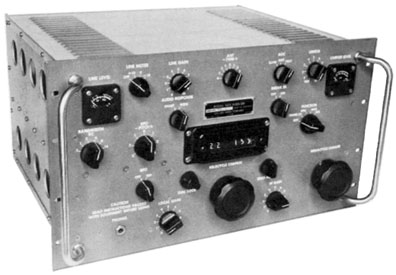
HISTORY
On September 1949 the U.S. Army Signal Corps staff, after being impressed by the performance of Collins Seris 51J HF receiver contacted Arthur Collins, founder and owner of the Company with his same name located at Ceadar Rapids, Iowa, intending to entrust Collins an important engineering development project . These project consist into design a new receiver conceptually similar to Collins 51J but with coverage range 0,5-32 MHz and equipped with features in order to improve the performance in terms of selectivity, frequency accuracy and stability, image rejection, dynamic range and exceptional mechanical and electrical strength.
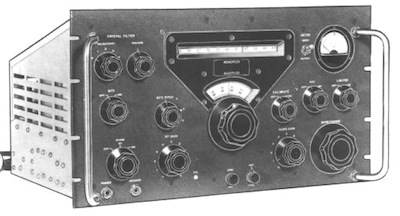
Collins 51J
At that time, the Collins Radio Company, which was founded officially by Arthur Collins in 1933, was already famous for its high degree in radio engineering with its high production quality and his good relations with important US military authorities.
The Ceadar Rapids Company had already done several successful design and supply radio equipments radio for the Army, Aviation and the U.S. Navy included the receiver 5IJ-I.
Ultimately, in the following months the Government assignment was officially formalized and extended beyond the implementation of the above explained receiver, called R-390, plus the other following versions:
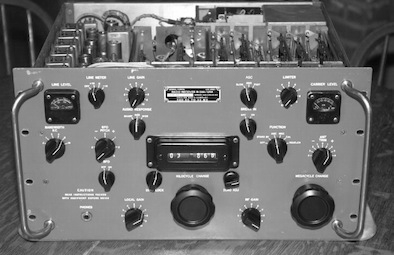
Collins R-390/URR
-R-391: version equipped with motorized tuning feature in order to save and recall frequency memories similar to WWII German Receiver E52a Koln, illustrated this site.
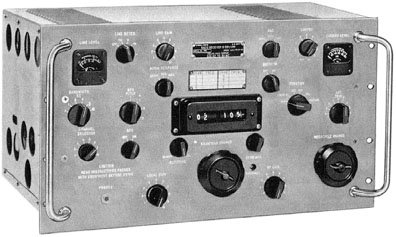
Collins R-391/URR
-R-389: Very Low Frequency (VLF) version with coverage form 10 to 1600 KHz
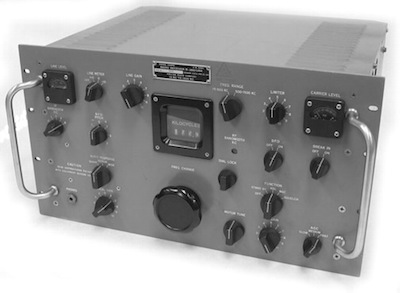
Collins R-389/URR
-R392-: compact HF vehicular receiver with technology similar to R-390 but significantly simplified in order to reduce size and weight.
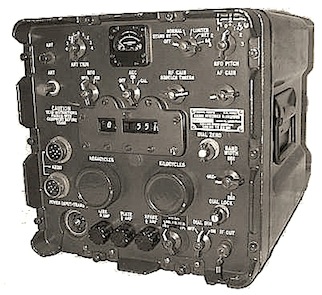
Collins R-392/URR
Given the project complexity were then made different study departments. In particularly, regarding the R-390 the project leader was Lou Couillard, a talented engineer.
Other technicians who was involved in the project are:
-Edgar Schorenike: RF module development, design mixer stages
-Chester-Rockewll and Tod Hunter: design of coils for RF module
-Art Eberhardt IF sub-chassis design
-Ed Hogue: audio stage and power supply unit
-Bob Griswold and Winston Williams: mechanical design
The first units of R-390 and R-391 were completed in mid the year 1950 and for Collins was a complete success: both receivers went far beyond the technical requirements imposed by the Signal Army so in a short time he was awarded a first contract to supply the army of about 3000 radios within the same year.
For two years after Collins produces another 10,000 units of R-390 and R-391, constructed according to two further contracts both dated 1951.
While the military government was not satisfied about the very high cost of these receivers: R390 $ 2000 ; R391 $ 3000 at the meantime showed a great interest in quartz mechanical filters developed and products by Collins during the R-390 development.
Among other things, this equipments being designed and built explicit government commission, than Collins could not claim any intellectual property of R-390, nor could continue to build it "for their acts" considering also that in those years, the receiver was covered by absolute secrecy military, the U.S. government was free to be built that radios by those who wanted, maybe even launching, a request for obtain the best possible conditions for supply the radios by a procurement decreasing races between the manufacturers authorized to participate.
In fact on year 1952 Matorola win a contract for supply about 10.000 R-390 radios.
With this last contract the production of this version of receiver ended. On the years 1953-1954 Collins finalized to design a new receiver version equipped with filters IF mechanical and engineered in order to reduce the production costs without performances degradation.
The same Engineer who was involved participated in the R-390 development began to work now conducted by Edgar Schoeinke instead of Lou Couillard and after less than a year the first R-390A radios was ready.
Despite these modifications the performances remains excellent even higher with the adoption of quartz mechanical filters that gave best selectivity performance. Nevertheless, the goal of cost reduction was not achieved in practice because the R-390A cost was just slightly less than its predecessor.
On 1954, Collins and Motorola will win a supply of 10.000 R-390A.
On 1955 Collins was awarded to supply further 10,000 R-390A.
In the following years the production was entrusted to other manufacturers including: Stewart Warner, Electronic Assistance Corporation (EAC), Imperial Industries, etc.
The last production dates back to 1984!
TECHNOLOGY
Radio Receiver R-390A/URR is a super-heterodyne 26 tubes type with multiple frequency conversion covering a frequency range of 0,5 to 32 MHz. Double conversion is used when operating from 8 to 32 MHz and triple conversion when operating from 0,5 to 8 MHz. Linear tuning provides constant frequency spread trough the entire range. Tuning is accomplished by positioning powdered-iron cores in the RF ( high performance tracking pre-selector) on IF coils, at rate controlled by complex mechanical arrangement of gears, shafts and cams.
The operating frequency is read from a counter-type mechanical indicator. A built-in crystal-controlled oscillator provide frequency calibration.
An output is taken from between the third and fourth iF stages to provide a 455 KHz output for SSB Converter CV-591/URR.
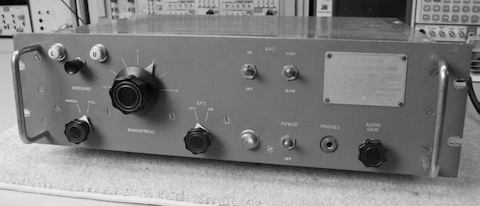
CV-591/URR
My Collins R-390A/URR
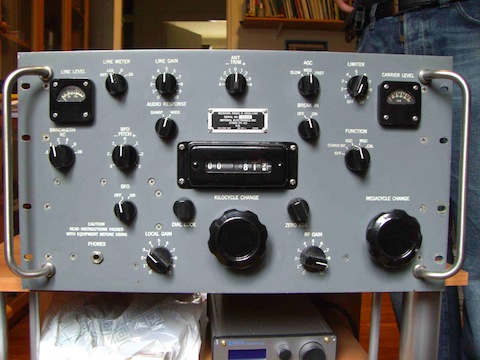
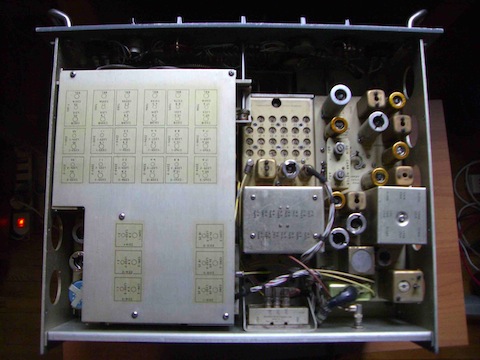

Bibliography
- Paolo Vippiani “R-390/URR - R-390A/URR Handbook” Editrice il Rostro Milano 1996 : the only available book regardig R-390 and R-390A radio. Only in italian Language
- TM 11-5820-358-10 “Operator’s Manual, Radio Receiver R-390A/URR” 16 January 1961.
- TM 11-5820-358-35 “Field and Depot Mainenance Manual, Radio Receiver R-390A/URR” 8 December 1961